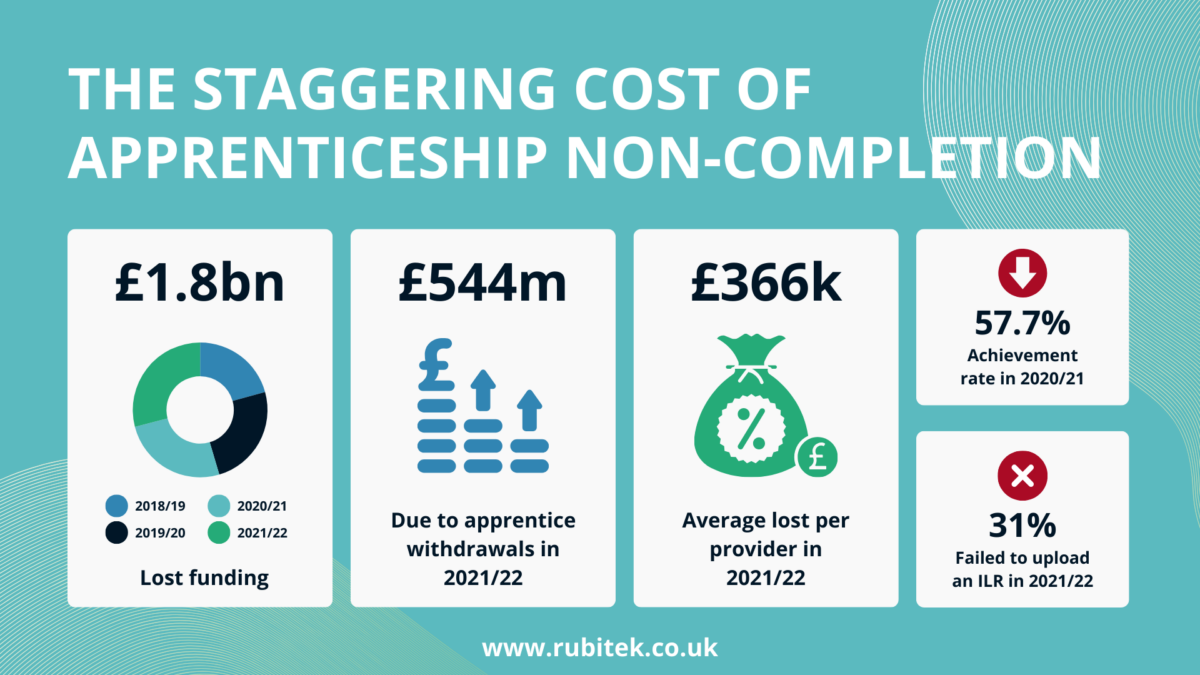We need to do more than provide additional funding to increase apprentice numbers

The recent announcement in the Spring Budget of additional funding to boost delivery of 13 high-value apprenticeship standards is undoubtedly a step in the right direction. But, it does little to address the significant issue of non-completion.
With average completion rates currently at 53%, while additional funding may encourage more starts, unless we address the issue of poor completion rates, this influx of additional learners may just exacerbate the issue.
In a freedom of information request, Rubitek uncovered that apprenticeship training providers have been losing huge amounts of funding for years, and the amount has been steadily growing.

The financial impact of non-completion
Our research covered the four year period 2018/19, 2019/20, 2020/21, 2021/11 and it revealed that apprenticeship training providers lost a staggering £1.8 billion from their academic year earnings, due to early withdrawals. And the amount is steadily increasing year on year. Based on the number of apprenticeship providers in 2021/2022, that equates to around £366 thousand for every provider. If you’re an apprenticeship provider, I urge you to think about the huge difference that funding, if you’d received it, would have made to your provision.
It makes business sense to invest in initiatives that improve learner completion rates
The issues of early withdrawals and non-completions persist as significant challenges, often stemming from factors beyond the control of individual learners. Issues such as inadequate supervision in the workplace, insufficient support structures, and constraints on off-the-job training hours can all contribute to this alarming trend. And as you can see from the data, the repercussions are not merely academic but carry substantial financial implications.
Addressing this issue requires a holistic approach – one that acknowledges the multifaceted nature of the problem and embraces a spectrum of solutions. It’s time to recognise that the responsibility for completion extends beyond the learner to encompass the broader ecosystem of support, including employers, training providers, and policymakers.
Exemplars of success
Amidst the challenges lie beacons of hope – providers achieving commendable completion rates upwards of 85%, and learning management platforms that provide frictionless collaboration across the entire ecosystem of apprentice support. These exemplars underscore the possibility of success and serve as a testament to the efficacy of proactive support structures. By studying their methodologies and best practices, we can glean useful insights into what works and, more importantly, how we can replicate and scale these successes across all apprenticeships.
Ultimately, the call to action is clear: it’s time to shift the narrative from one of resignation to one of empowerment. Let us come together, across sectors and disciplines, to champion the cause of apprenticeship completion and ensure that every learner has the support they need to realise their full potential. After all, in the journey toward lifelong learning and economic prosperity, every dropout represents not just a loss of funding, but a loss of opportunity—for the individual, for the provider, and for society as a whole.
By Kerry Linley, apprenticeships consultant and CEO of Rubitek











Responses